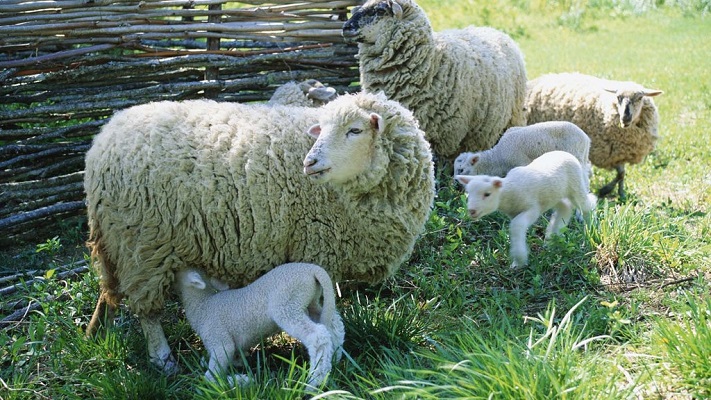

Research and industry advice mostly agrees on 12 weeks as the optimum weaning age but, if ewes are lean, grass height is below 4cm, or lambs are growing less than 150g/day, early weaning is beneficial. This is because competition for grass will be affecting performance. It is not only about getting lambs away, but also focusing on ewe condition in time for mating – this is highly influential to next year’s lamb crop.
Here we examine when to wean and other weaning management issues.
1. When to wean – early or later?
The timing of weaning is dictated by the development of the lamb’s rumen – wean too early and the animal will be unable to digest pasture or other feeds. Even when the rumen is sufficiently developed, withdrawing nutrient dense-milk could affect lamb growth. By week four, the lamb’s rumen is fully developed, so its ability to utilise other feeds is no longer a concern. As animals age, their efficiency at converting feed into growth decreases, therefore young lambs must have the best grass or feed to replace declining milk supply.
By 12 weeks the contribution of milk to the diet is small, but as this is still very nutritious it is really worth considering the degree of competition between the ewe and lamb under the conditions of the season.
2. Body condition scoring ewes at weaning
As overfat and lean ewes will underperform, assessing body reserves at weaning allows sufficient time for condition to be altered before tupping. Increasing condition in an upland ewe from a 2.0 to a 3.0 will increase the lambs carried or scanning percentage per ewe. Managing ewes by condition score is a more sustainable strategy than conventional flushing of thin ewes.
Condition scoring at weaning, or at the very latest eight weeks before tupping, is vital. Typically, it takes eight weeks to change one condition score – the equivalent of 12% of live weight. Therefore, a 70kg ewe would need to lose or gain 8.4 kg to move one score.
Turn over-conditioned ewes onto poor pasture and under-conditioned ewes onto high quality forage.
Investigate why a ewe is lean with faecal egg counting for worm burdens, or consider fluke, Johne’s or Maedi Visna as causes. The results should be discussed with a vet and appropriate action taken
3. Feeding weaned ewes
Dry off ewes after weaning by providing low quality grazing or feed for around two weeks. Thereafter, ewes that have reared multiples need special attention, as do gimmers and hogs; hill ewes are especially vulnerable if returned to the hill in poor condition.
If a ewe needs to gain 8.4kg to improve condition by one score, the target daily live weight gain should be at least 170g/day.
Supplementary feeding may be justified if ewes are in poor condition. The decision to feed ewes should be based on the cost benefit of potential condition score gains, but it is important to first understand if there are underlying reasons why ewes are lean.
4. Taking lambs through to finishing – what feed to provide
High grass digestibility is vital to the growth potential – routinely measure and control sward height. In a set stocking situation, target sward height should be 4-6cm; where grass is above or below this, minimise losses in lamb performance by supplementary feeding, weaning or shutting off additional fields for silage. Consider growing forage crops for finishing lambs if grass species makes it difficult to keep highly digestible feed ahead of lambs.
5. Vaccinations and other interventions at weaning
Be aware of resistance issues to wormers because if a product is not working, lambs will need more feed to achieve finishing weights. Implementing the plan at weaning reduces the chances of affected sheep carrying and spreading disease to other ewes and lambs.
Think ahead to vaccinations pre-tupping – the farm’s vet is best placed to advise on what vaccines are appropriate for an individual farm and the best time to administer.
 Contact Jaguza Support
Contact Jaguza Support